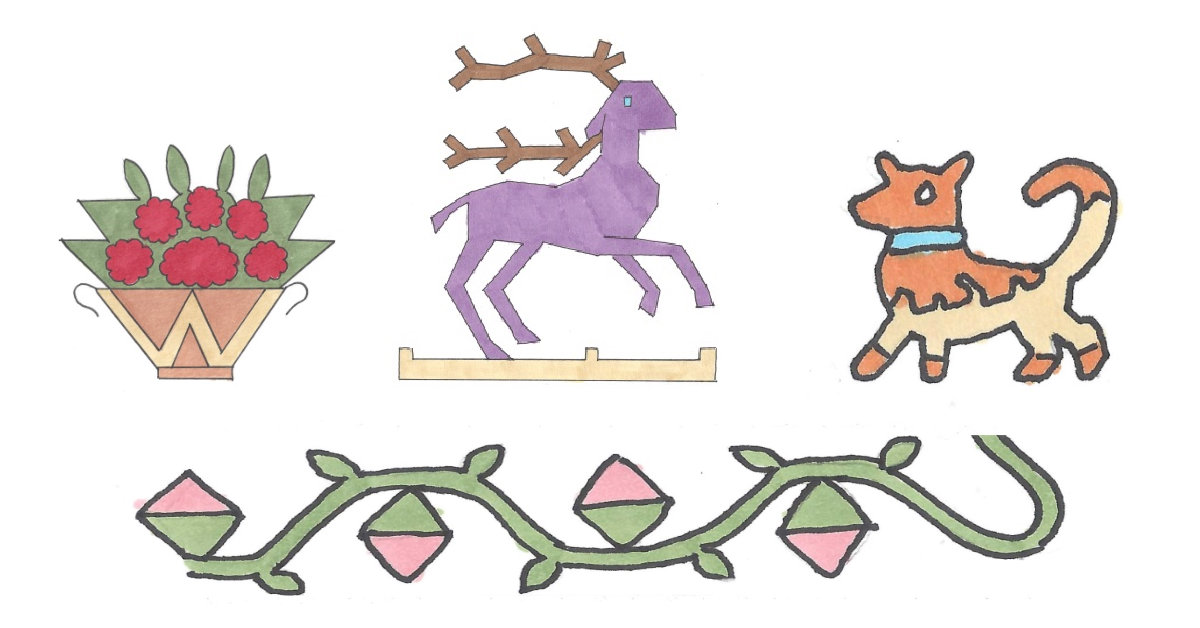Though it may be tempting to assign symbolic meaning to every pictorial motif (a distinct and recurring representational image) included in a needlework sampler, it’s impossible to know the original intentions of a sampler’s maker. Schoolgirls often used motifs like flowers, animals, and buildings to reflect what they saw in the world around them, including images of whatever they were interested in at the moment.

Weeping willow trees, funereal monuments, and urns almost always symbolize death and mourning, but other motifs can be harder to interpret. According to “Sampler Motifs and Symbolism,” flowers in a basket can symbolize hope, friendship, and love. The stag, called the hart in European stories, often represents faithfulness and charity, gentleness, the wisdom of God, and the adversary of Satan. A pet dog in a sampler can symbolize loyalty and protection. The strawberry vine border used in many samplers may represent perfect virtue. Strawberries were believed to be the ideal fruit because they have no pits, thorns, or rinds.
The meanings of most pictorial motifs originated in early Christian theology. While European and American schoolgirls continued to stitch these images on samplers through the early 20th century, very few people studied or understood pictorial symbolism. As designs spread through pattern books and as motifs were copied from older samplers, a schoolgirl stitching a sampler was just as likely to use a motif for its decorative appeal as for its symbolic meaning.
"These Various Threads I Drew: Needlework Samplers" exhibit continues in the Study Gallery through June 2018.
